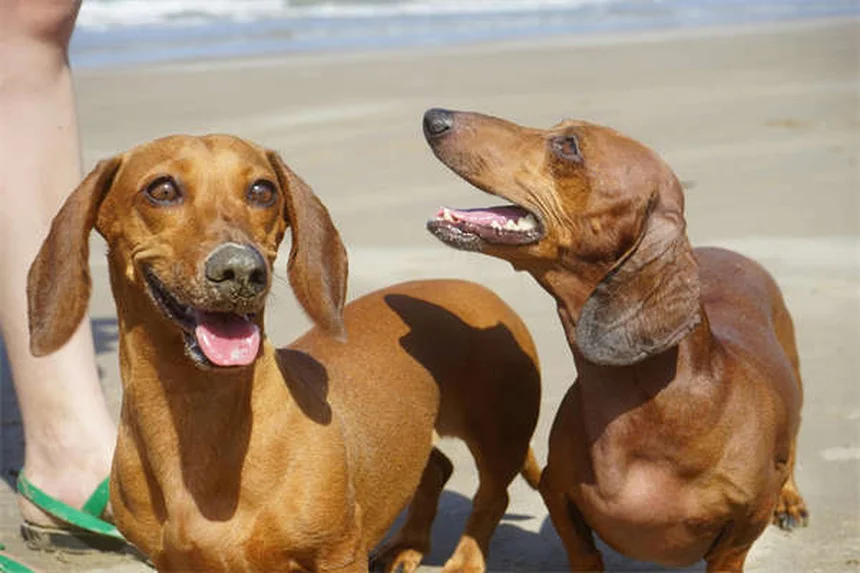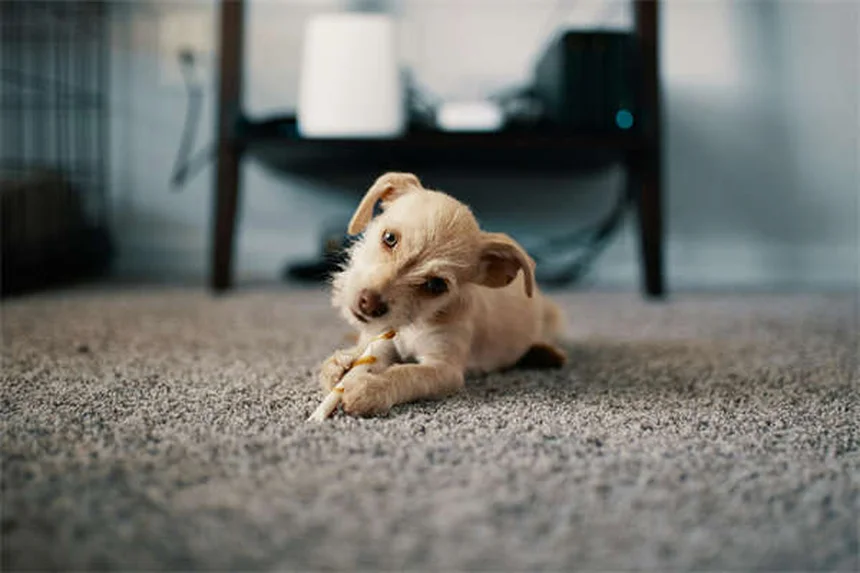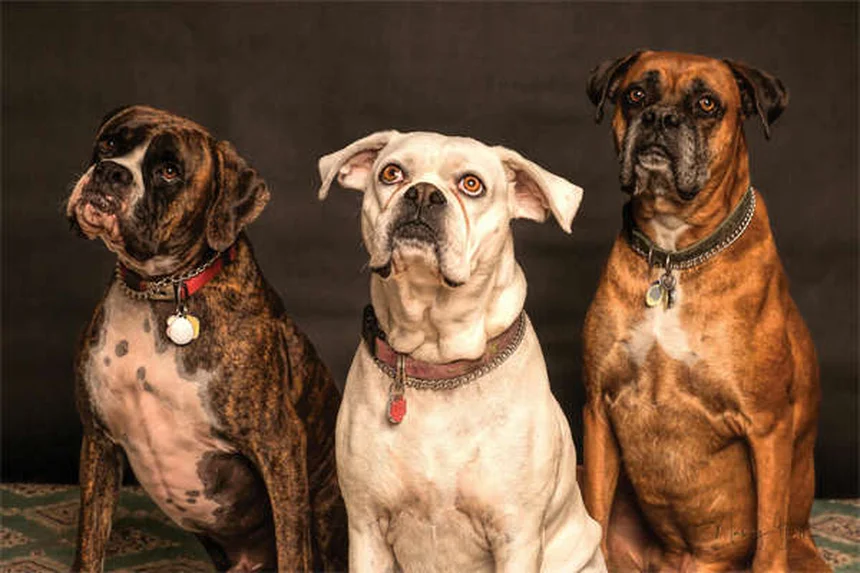Advertisement
Wondering how to properly socialize your puppy? The answer is: Start early and make it positive! Puppy socialization between 3-12 weeks is absolutely crucial for raising a well-adjusted adult dog. I've seen too many nervous dogs whose problems could've been prevented with proper early socialization.Here's the deal - your puppy's brain is primed for learning during this short window. We're talking about exposing them to all the sights, sounds, and experiences they'll encounter throughout their life. From loud city noises to meeting strangers, these early positive experiences shape their future behavior.In this guide, I'll walk you through exactly how to socialize your puppy safely and effectively. You'll learn why it's so important, when to start, and my proven step-by-step method that's worked for countless puppies. Trust me, putting in this work now will save you from behavioral headaches later!
E.g. :5 Proven Ways to Stop Compulsive Dog Behaviors Fast
- 1、The Puppy Socialization Playbook: Raising a Confident Canine
- 2、The Puppy Socialization Timeline
- 3、Socialization Must-Dos
- 4、Advanced Socialization Strategies
- 5、Socialization Pitfalls to Avoid
- 6、Making Socialization Stick
- 7、The Science Behind Puppy Socialization
- 8、Creative Socialization Ideas You Haven't Tried
- 9、Socialization for Specific Lifestyles
- 10、When Socialization Goes Wrong (And How to Fix It)
- 11、Socialization Tech Tools
- 12、FAQs
The Puppy Socialization Playbook: Raising a Confident Canine
Understanding the Puppy Socialization Window
Ever wondered why some dogs freak out at skateboards while others couldn't care less? It all comes down to those critical first 3-12 weeks. This is when your puppy's brain is like a sponge, soaking up every new experience.
During this golden period, we want to expose puppies to everything they'll encounter in life - from loud garbage trucks to chatty toddlers. Think of it as building their "life experience resume." The more positive entries we add now, the better adjusted they'll be later.
Why Socialization Isn't Just Nice - It's Necessary
Let me ask you something: Would you rather have a dog that panics at every new situation or one that takes life in stride? Exactly! Proper socialization prevents future anxiety issues that could turn your dream dog into a nervous wreck.
Modern dogs face more challenges than ever before. Between city noises, unpredictable strangers, and other animals, they need all the help they can get. A well-socialized puppy grows into a dog that can handle:
| Socialized Puppy | Unsocialized Puppy |
|---|---|
| Greets new people calmly | Hides or barks at strangers |
| Ignores skateboards/bikes | Chases or fears moving objects |
| Enjoys car rides | Gets carsick or anxious |
The Puppy Socialization Timeline
 Photos provided by pixabay
Photos provided by pixabay
Birth to 8 Weeks: Breeder's Responsibility
Before you even bring your puppy home, the breeder or shelter should have started the process. Good breeders expose puppies to:
- Various floor surfaces
- Different human voices
- Gentle handling
- Household noises
8-16 Weeks: Your Turn to Shine
This is when you become the ultimate tour guide to the world. But here's the catch - you need to balance socialization with safety. Until those vaccines are complete, we get creative:
Carry your pup in a sling to outdoor cafes. Set up a "safe zone" blanket at the park. Invite vaccinated dog friends over for playdates. Remember, we're building positive associations, not overwhelming the little guy.
Socialization Must-Dos
People Exposure 101
Not all humans are created equal in puppy eyes. We need to introduce them to:
- Tall people in hats
- Kids (the unpredictable kind)
- People using mobility devices
- Folks of different ethnicities
Pro tip: Always keep treats handy to create positive associations. And never force interactions - let your pup approach at their own pace.
 Photos provided by pixabay
Photos provided by pixabay
Birth to 8 Weeks: Breeder's Responsibility
Ever seen a dog refuse to walk on grates? Let's prevent that! Expose your puppy to:
- Slippery floors
- Metal surfaces
- Grass, sand, and gravel
- Wooden decks
Make it fun by scattering treats on each new surface. Before you know it, your pup will be walking confidently anywhere.
Advanced Socialization Strategies
Puppy Kindergarten: Worth Every Penny
Why struggle alone when you can join forces with other puppy parents? Good socialization classes offer:
- Controlled introductions to other pups
- Exposure to strange objects
- Basic obedience foundations
- Professional guidance
Just avoid any classes that use harsh methods. We're building confidence, not fear!
The Art of Short & Sweet
Here's a question: What's better - one marathon socialization session or several short ones? Bingo! Puppies learn best in 5-15 minute bursts.
Try this routine:
1. Quick trip to the hardware store (10 min)
2. Coffee shop patio visit (15 min)
3. Evening neighborhood stroll (20 min)
These bite-sized adventures add up to a well-adjusted dog.
Socialization Pitfalls to Avoid
 Photos provided by pixabay
Photos provided by pixabay
Birth to 8 Weeks: Breeder's Responsibility
See your puppy yawning, turning away, or tucking their tail? That's your cue to wrap it up. Forced socialization backfires faster than you can say "bad experience."
Watch for these stress signals:
- Excessive lip licking
- Whale eye (showing the whites)
- Shaking or trembling
- Trying to hide
The Vaccination Balancing Act
Yes, we need to protect puppies from disease. But complete isolation until 16 weeks creates other problems. The solution? Smart socialization:
- Carry your pup in public places
- Host playdates with vaccinated dogs
- Use your car as a mobile observation deck
- Create "safe zone" experiences at home
Making Socialization Stick
Beyond Puppyhood
Think socialization ends at 6 months? Think again! To maintain those skills, keep exposing your dog to:
- New environments
- Different people
- Changing situations
- Novel challenges
A dog's ability to adapt is like a muscle - use it or lose it. Regular "field trips" keep their social skills sharp.
Tracking Your Progress
Create a socialization checklist to ensure you're covering all bases. Include categories like:
- People types
- Environments
- Animals
- Surfaces
- Sounds
Check off items as you go, and don't stress if you miss some. Even hitting 80% of these will give your pup a huge advantage in life.
The Science Behind Puppy Socialization
How Puppy Brains Develop Social Skills
You know how teenagers seem to learn languages faster than adults? Puppies have that same superpower for social learning! Their brains produce extra neural connections during this period, making every new experience stick like glue.
Neuroscientists found that puppies exposed to diverse stimuli develop thicker cerebral cortexes - the part of the brain responsible for decision-making and social behavior. This explains why well-socialized dogs tend to:
- Make better eye contact
- Recover faster from surprises
- Read human body language accurately
The Hormones That Shape Puppy Personalities
Ever notice how some puppies bounce back from scary experiences while others seem traumatized? That's oxytocin and cortisol at work! Positive socialization boosts the "love hormone" oxytocin, while negative experiences flood their system with stress hormones.
Here's a fun fact: Puppies who get gentle massages during socialization develop higher oxytocin levels than those who don't. So go ahead and give your pup those extra cuddles - it's science!
Creative Socialization Ideas You Haven't Tried
Turn Your Home Into a Puppy Adventure Park
Who says you need to leave home for great socialization? With some household items, you can create an obstacle course of new experiences:
- Tape bubble wrap to the floor
- Drape colorful scarves over chairs
- Play recordings of thunderstorms
- Set up a mini tunnel with cardboard boxes
The best part? You can control the intensity and always have treats ready when they conquer each challenge. My neighbor's puppy went from fearing the vacuum to chasing it (we're still working on that one).
Socialization Through Scent Games
Did you know a dog's nose is 40 times more powerful than ours? We can use this superpower for socialization by creating scent treasure hunts with novel smells:
| Common Scents | Why They Matter |
|---|---|
| Citrus fruits | Prepares them for household cleaners |
| Leather | Gets them comfortable with shoes/bags |
| Coffee grounds | Helps with café visits later |
Hide these scents around your home and reward your pup for investigating. You're basically creating a smell dictionary for their future!
Socialization for Specific Lifestyles
City Puppy vs Country Puppy Needs
Would you socialize a future service dog the same way as a farm companion? Of course not! Tailor your approach to your puppy's likely adult environment.
For urban pups, prioritize:
- Crowded sidewalks
- Elevators and stairs
- Public transportation sounds
- Food truck noises
For rural pups, focus on:
- Livestock encounters
- ATV/tractor exposure
- Wildlife scents
- Swimming in natural bodies of water
The Apartment Dog Socialization Challenge
Living in a high-rise with a puppy? I feel you! The key is quality over quantity when you can't just open the back door. Try these space-savvy socialization tricks:
- Use your building's laundry room for appliance sounds
- Ride the elevator up and down during off-hours
- Set up a "balcony observation deck" with treats
- Host weekly puppy parties with neighbors' dogs
Remember, even five minutes of intentional exposure daily adds up to a confident city dog!
When Socialization Goes Wrong (And How to Fix It)
Reading Puppy Body Language Like a Pro
How can you tell if your puppy is learning or just surviving an experience? Their body speaks volumes if you know how to listen:
- Good signs: Relaxed mouth, wagging tail, curious sniffing
- Warning signs: Stiff body, tucked tail, avoiding eye contact
Caught your pup in a stressful situation? Immediately create distance and offer high-value treats. Then try again later at a lower intensity - maybe watch skateboarders from across the park instead of up close.
The Magic of "Do-Overs"
Ever had a bad first date but gave the person another chance? Puppies deserve the same opportunity! If one socialization attempt goes poorly:
1. Wait a few days
2. Reduce the intensity (distance, volume, duration)
3. Pair the experience with amazing treats
4. Watch closely for improved reactions
Most puppies will surprise you with their resilience when given a positive second impression of something that initially scared them.
Socialization Tech Tools
Apps That Help With Puppy Socialization
Yes, there's an app for that! These digital helpers take the guesswork out of socialization:
- Puppy Socializer: Plays customizable soundscapes
- Dogo: Tracks progress with checklists
- Puppr: Offers guided socialization challenges
My personal favorite is the "Random Experience Generator" feature some apps have - it suggests spontaneous socialization activities so you don't fall into a routine.
Using YouTube for Controlled Exposure
Why risk overwhelming your puppy with real-life stimuli when you can test the waters virtually first? Create a custom desensitization playlist with videos of:
- Fireworks displays (start with muted volume)
- Dog park scenes
- Children playing
- Grooming procedures
Gradually increase volume/duration as your puppy shows comfort. It's like training wheels for scary experiences!
E.g. :How did you begin socializing your puppy? : r/puppy101
FAQs
Q: What's the best age to start socializing a puppy?
A: The prime socialization window is between 3-12 weeks old, but the earlier the better. I recommend starting as soon as you bring your puppy home, usually around 8 weeks. This is when their brains are most receptive to new experiences. The breeder should have begun the process, but now it's your turn! Focus on gentle, positive exposures to different people, surfaces, and sounds. Remember, even after 12 weeks, you'll want to continue socialization through adolescence.
Q: How can I socialize my puppy before they're fully vaccinated?
A: This is a common concern I hear from new puppy parents. The solution? Creative socialization! Carry your pup in a sling to outdoor cafes, set up a safe blanket area at the park, or invite vaccinated dog friends over. You can even use your car as a mobile observation deck. The key is balancing safety with exposure. I always recommend discussing your specific situation with your vet to create a customized plan.
Q: What are the most important things to socialize my puppy to?
A: Based on my experience, focus on these critical categories: 1) Different types of people (kids, seniors, people in hats/uniforms), 2) Various surfaces (grass, tile, metal grates), 3) Common noises (traffic, vacuums, doorbells), and 4) Other vaccinated, friendly dogs. Don't forget about handling exercises too - getting them comfortable with nail trims and vet exams will pay off big time!
Q: How often should I socialize my puppy?
A: I recommend short, frequent sessions - think 5-15 minutes, several times a day. Puppies have short attention spans, so these bite-sized adventures work better than marathon outings. Aim for at least 3-5 positive new experiences weekly during peak socialization period. Quality matters more than quantity - one good experience is worth ten rushed ones.
Q: What signs show my puppy is overwhelmed during socialization?
A: Watch for these stress signals: excessive yawning, lip licking, tucked tail, shaking, or trying to hide. If you see these, it's time to end the session. Remember, we want socialization to be positive, not traumatic. I always tell clients - when in doubt, call it a day. You can always try again tomorrow when your pup is rested and ready.

















